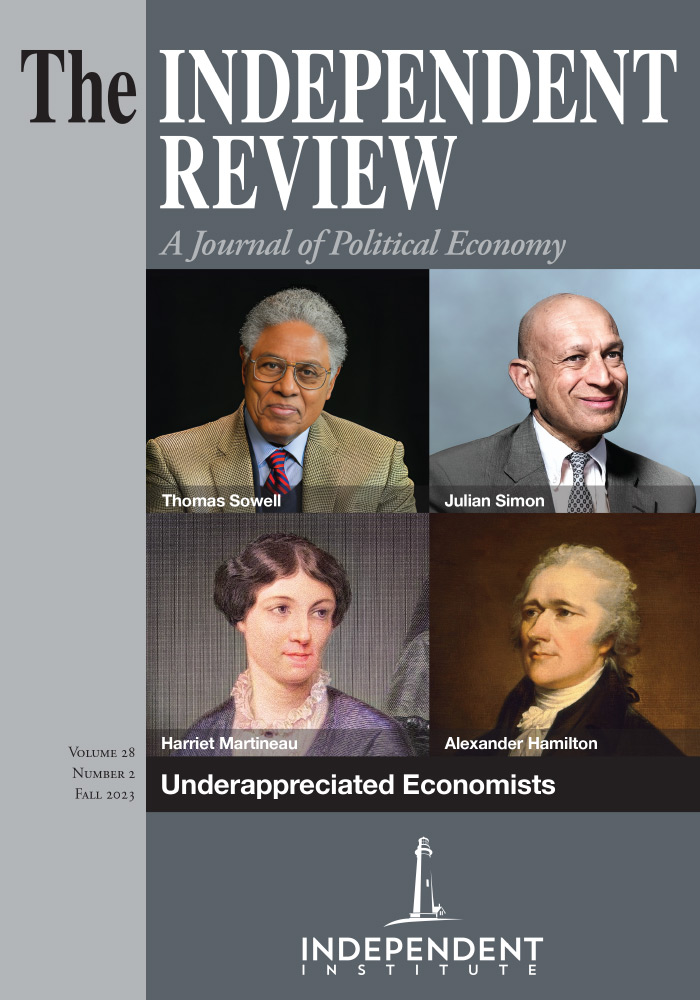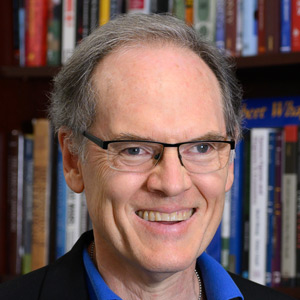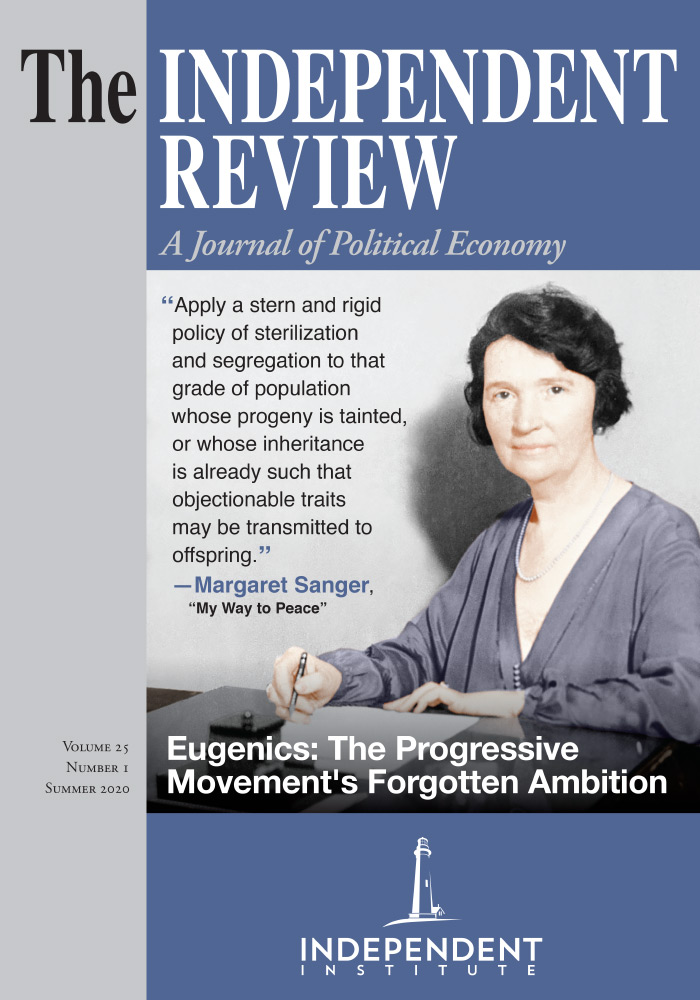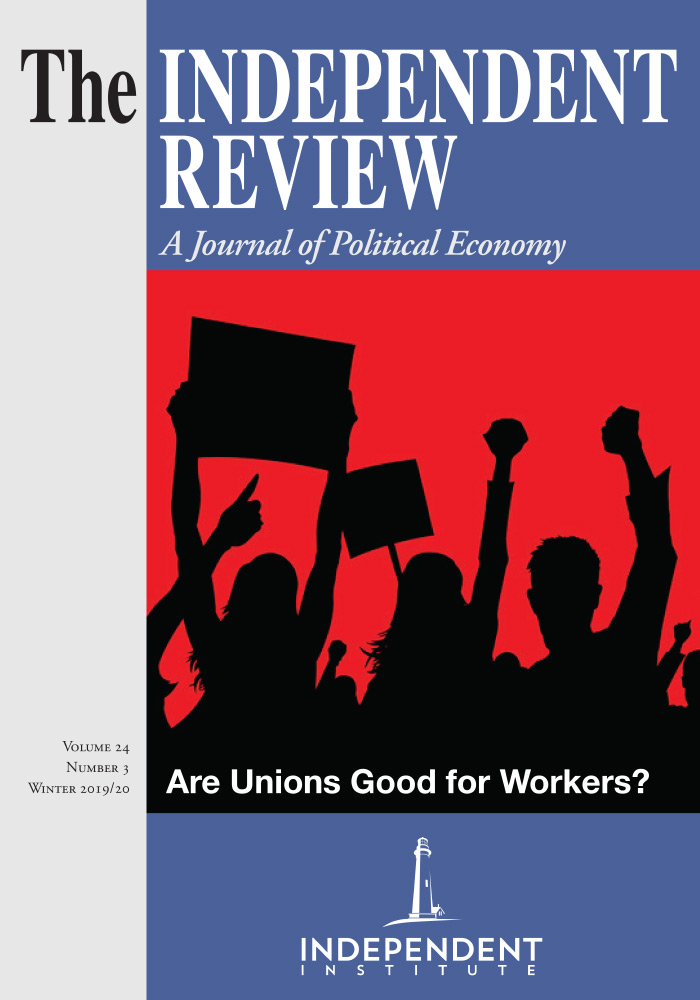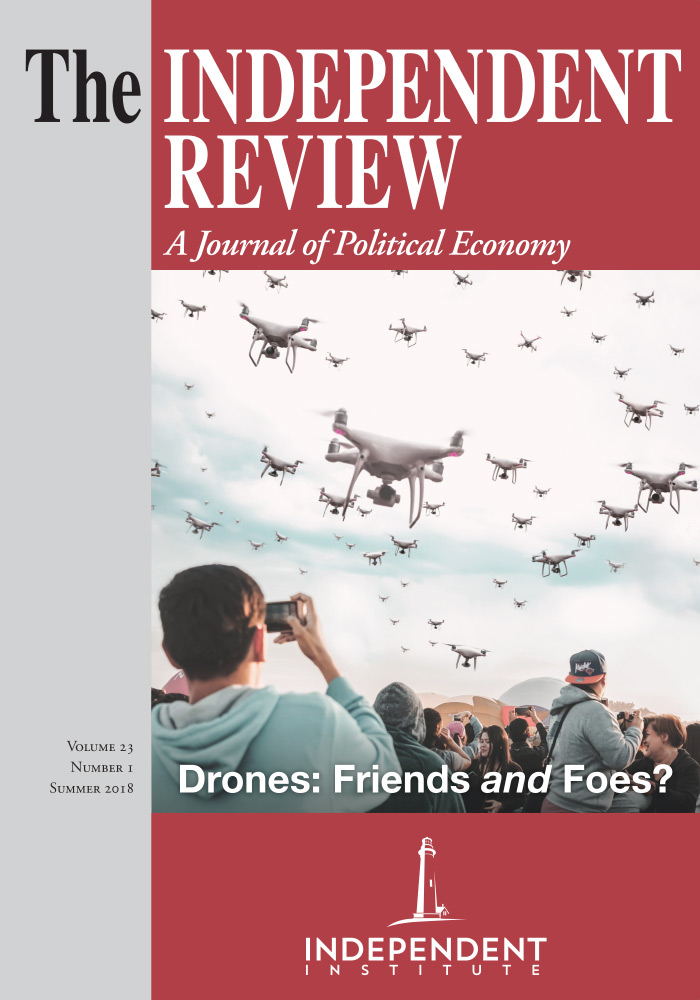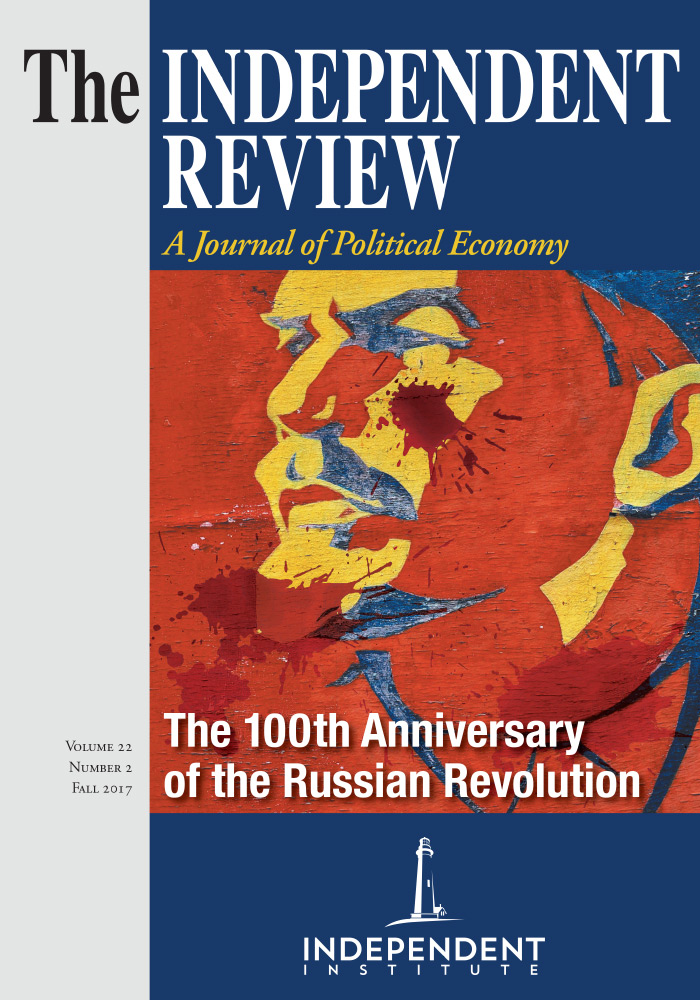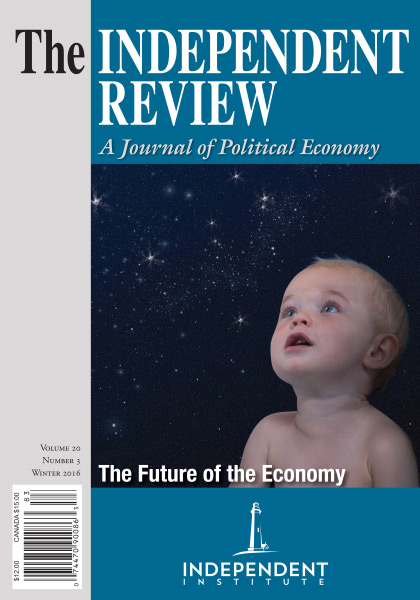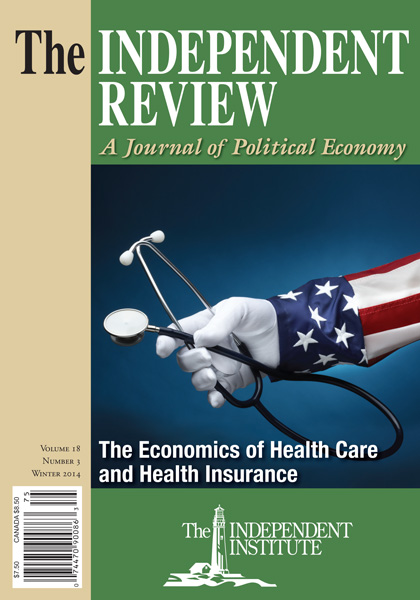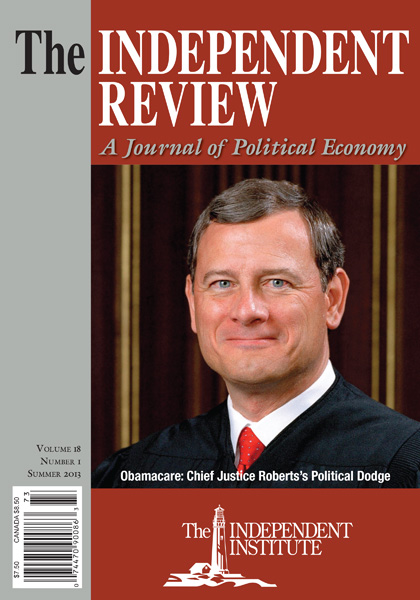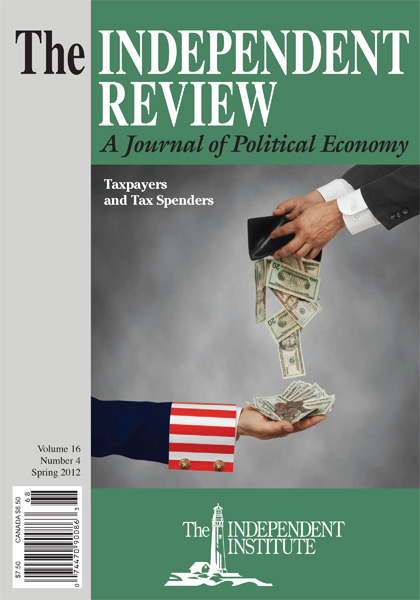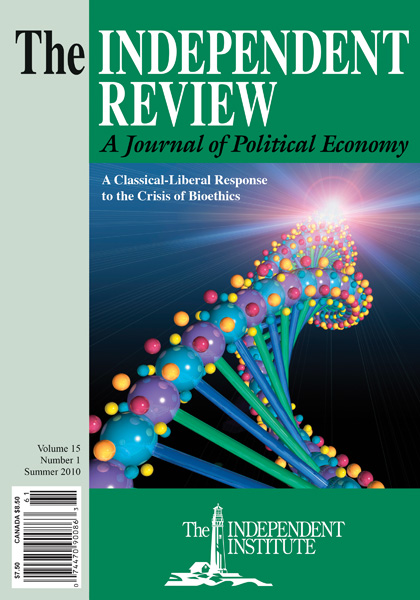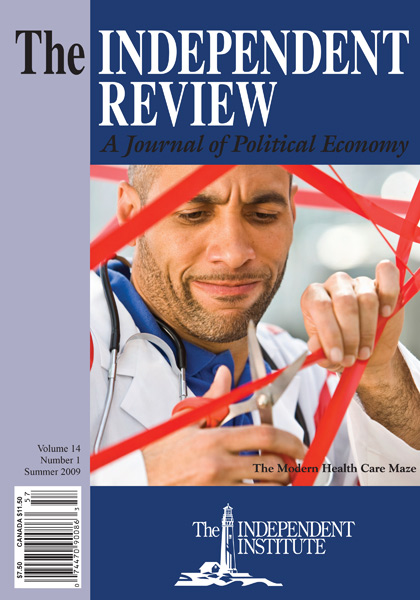Julian Simon felt woefully underappreciated, lamenting that most of his best scientific work had “gone for naught.” Nevertheless, Simon almost single-handedly punctured Malthusian worries about population growth and natural resource scarcity in works like The Ultimate Resource, drawing attention to his ideas by winning a famous bet about resource prices with doomsayer Paul Ehrlich. Simon showed that in the long run we’re all richer—a trend that is unlikely to end because we have established a system that harnesses human ingenuity for the good of all.
Article
Julian Simon felt underappreciated. Simon, whose book The Ultimate Resource (1981b) effectively punctured Malthusian[1] worries about population growth and natural resource scarcity, began his autobiography by noting that “a novelty of this book among scientific autobiographies is that it is not written by a person who is a success,” calling himself a “professional outcast, a failure,” and lamenting that “most of my best scientific work has gone for naught.” He lamented, “I have never (I mean literally never, truly an amazing statistic) had a single standard mark of professional respect (let alone honor) in my academic professions” (Simon 2002, xii–xiii, emphasis in original), observing that he had never held office in a professional association or been asked to referee a paper for a top journal in economics, demography, or statistics. Near the end of the autobiography, Simon recounted that when administrators at the University of Maryland tried to hire him, the Department of Economics twice rejected the offer, so he was appointed to a position in the College of Business and Management.
Although Simon has been substantially underappreciated, few would reach his extreme conclusion about this fact. He did, after all, publish articles in top professional journals, including the American Economic Review, the Journal of Political Economy, the Quarterly Journal of Economics, the Review of Economics and Statistics, the Review of Economic Studies, and Econometrica.[2] And recognition has come after his death, including the Institute for the Study of Labor’s annual Julian L. Simon Lecture to honor his work in population economics and the University of Illinois’s Julian Simon Memorial Faculty Scholar Endowment.
Simon’s Life and Career before Academia
Simon (1932–98) graduated from Harvard University, which he attended on an ROTC scholarship; served in the United States Navy; and then entered the advertising business. His experience in the real world of business contributed to his realistic view of the economy.[3] “Around this time, there appeared several books with themes like that of The Hidden Persuaders by Vance Packard that warned of the enormous power of ‘Madison Avenue’ to propagandize and influence people’s buying and their ways of life. Academics such as ... John Kenneth Galbraith frequently wrote about the power of advertising over people as if it can have the powers of a Svengali. Clearly, these people had never attempted to actually convince people to buy a commercial product with advertising; if they had, they would have known how difficult it is to do so” (Simon 2002, 169).
Simon earned an MBA and a PhD in business economics from the University of Chicago. Never one to hide his own failures, he advertised the “Pain of Failing a Ph.D. Oral Exam” (Simon 1980) in the American Economist. The truth is that Simon’s economics coursework amounted to only three or four quarter-length courses, all in the School of Business at Chicago, rather than in its famed Department of Economics. The first question in his oral examination was elementary, concerning consumer surplus, but when he was asked to demonstrate the concept geometrically, he put quantity on the vertical axis and price on the horizontal axis—something students learn not to do in the first couple weeks of introductory courses on the subject. “I lost my moorings, and my mind began to float away” (Simon 1980, 44). Simon passed the exam on his second attempt and went on to show that someone with enough common sense and a keen eye for cold, hard facts could make major contributions to a field in which he sometimes had a slippery grasp of formal theory. Better to humbly admit one’s errors than to be one of those who were “harmfully wrong” in their “contemporary analyses and ... consequent forecasts for the future,” who “arrogantly relied on their supposedly superior intellects and therefore scanted on the examination of the available evidence,” as were John Maynard Keynes and Paul Samuelson (Simon 2002, 88).
Following graduate school, Simon entered the mail-order business, developing a healthy wariness of and appreciation for regulations while running his own firm. When he sold a booklet titled “How to Make Your Will,” which was accompanied by a blank form and written by a professional lawyer, the Federal Trade Commission shut him down, charging that it was against the law for him to dispense legal advice. Later, he achieved excellent results selling a catalog of materials for home brewing but was again shut down. “The law permitted people to make wine at home and seemed to permit people to make a limited quantity of beer as well. But the federal alcohol authorities—probably at the behest of the commercial brewers—carried on a sporadic campaign of harassment against the sellers of such books” (Simon 2002, 194). Simon again ran afoul of regulators when he ran misleading pharmaceutical ads. Admitting his culpability, he decided to publish How to Start and Operate a Mail-Order Business (Simon 1965b, which was updated through five editions) and then turn to full-time writing and research as an academic.
Simon the Polymath
At the beginning of his academic career while at the University of Illinois, Simon published a wide range of studies related to advertising and marketing. Typical examples are an article in which he examined the rationale for newspapers’ price discrimination in setting advertising rates, using the results of a questionnaire he had mailed to daily newspapers (Simon 1965a); an examination of economies of scale in advertising; and studies that estimated the elasticity of demand for liquor and for cigarettes. Simon’s early academic research went in numerous directions—including an economic analysis of where libraries should store their books, an empirical analysis of the effect of income on suicide, and a two-page paper that ultimately had a profound impact on public policy: “An Almost Practical Solution to Airline Overbooking” (Simon 1968).[4]
Arguably, Simon should have omitted the word “almost” from his title. The plan has been widely adopted and speaks for itself.
Perhaps the reader has suffered a fit of impotent rage at being told that he could not board an aeroplane for which he held a valid ticket. The explanation is clear, and no angry letter to the president of the airline will rectify the mistake, for mistake it was not. The airline gambles on a certain number of cancellations, and therefore sometimes sells more tickets than there are seats. Naturally there are sometimes more seat claimants than seats. The solution is simple. All that need happen when there is overbooking is that an airline agent distributes among the ticket-holders an envelope and a bid form, instructing each person to write down the lowest sum of money he is willing to accept in return for waiting for the next flight. The lowest bidder is paid in cash and given a ticket for the next flight. All other passengers board the plane and complete the flight to their destination. All parties benefit, and no party loses. (Simon 1968, 201)
Simon speculated that this commonsense solution wasn’t adopted because “such an auction does not seem decorous,” but the primary reason was probably government regulations, which were swept away when an economist, Alfred Kahn, was appointed chair of the Civil Aeronautics Board in 1977 and allowed airlines to follow Simon’s advice.
Population Questions and The Ultimate Resource
By the end of the 1960s, Simon had begun to focus his attention on population issues, retooling himself as a demographer. His attention was drawn to the field by worries, which he shared with many others at the time, about overpopulation. But his research led him to the opposite conclusion, that, especially in the long run, rising population was a key source of rising prosperity.[5]
This decade of research culminated in a pathbreaking book, The Ultimate Resource (Simon 1981b), which was warmly greeted by most economists but reviled by advocates of population control. In the book, Simon reframed the natural resource “problem” and the population “problem,” using sound economics. The natural resource problem isn’t that we’re “running out”; it is—more basically— scarcity, and scarcity can be usefully measured using prices. Is the problem of natural resource scarcity getting worse? No. Not even close. As Simon documented again and again, the inflation-adjusted (real) price of natural resources—from iron to oil to lead to coal—had been falling, not rising, in the long run. Likewise, the long-run price of food—including staples such as wheat and corn—was falling and per capita food production was rising.[6]
To his credit, Simon intuited that the rising natural resource prices of the 1970s were an anomaly. Accordingly, he focused on the long run: decades, centuries, millennia. Ever provocative, Simon tweaked readers by arguing that natural resources aren’t merely abundant; they are “infinite.” He didn’t mean infinite in the sense that God is infinite but rather in the sense that there is so much that we will never run out. (It’s not clear that he realized this, but the word “finite” derives from the Latin finire, which means “to finish”—and Simon essentially argued that the process of producing natural resources would never reach an end.) We certainly haven’t run out in the years since Simon wrote. Thomas Covert, Michael Greenstone, and Christopher Knittel showed, for example, that proven reserves of both petroleum and natural gas have more than doubled since 1980. They concluded that the “historical record indicates that the supply of fossil fuels has consistently increased over time” (Covert, Greenstone, and Knittel 2016, emphasis added).
The population problem isn’t “too many people.” The problem, as Simon explained it, has always been that children are very costly to parents, whereas most of the material benefits from them come when they are adults, and many of these benefits go to people other than their parents. Putting the natural resources and population together, his argument can be summarized very simply: Prices are determined by supply and demand; as goods become scarcer, their prices increase; as prices increase, we look for substitutes, better methods of production, and better methods of conserving those goods. There is abundant empirical evidence that, in the long run, mankind has been made better off for having faced increased scarcity because we have been successful in reducing it. Rising population isn’t a problem; rather, it’s evidence that a problem has been solved: population rises because the discoveries and cooperation of man allow and encourage it to occur. Even more important, greater population allows us to solve more problems. Thus, the ultimate resource isn’t energy or minerals or metals. The ultimate resource is the creative power of humankind. The final sentence of The Ultimate Resource pulls everything together: “The ultimate resource is people—skilled, spirited, and hopeful people who will exert their wills and imaginations for their own benefit, and so, inevitably, for the benefit of us all” (Simon 1981b, 348).
Unfortunately, there is a catch in this sentence. “The better future does not happen ‘automatically’ and without effort” (Simon 1995, 21). Not every set of social and economic arrangements makes good use of human drive and ingenuity. Simon indicated that only one has a good track record—the capitalist market system: “The extent to which the political-social-economic system provides personal freedom from government coercion is a crucial element in the economics of resources and population. Skilled persons require an appropriate social and economic framework that provides incentives for working hard and taking risks, enabling their talents to flower and come to fruition. The key elements of such a framework are economic liberty, respect for property, and fair and sensible rules of the market that are enforced equally for all” (Simon 1995, 26). “No government decision maker can come close to the efficiency of millions of individual buyers and investors who go comparison shopping” (Simon 1981b, 119).
The Bet
Some people belittle numbers. Henry David Thoreau claimed that an “honest man has hardly need to count more than his ten fingers or in extreme cases he may add his ten toes” (Thoreau [1854] 1951, 106). Antoine de Saint-Exupéry’s Little Prince says, “Grown-ups like numbers. When you tell them about a new friend, they never ask questions about what really matters. They never ask: ‘What does his voice sound like?’ ‘What games does he like best?’ ‘Does he collect butterflies?’ They ask: ‘How old is he?’ ‘How many brothers does he have?’ ... ‘How much money does his father make?’” (Saint-Exupéry, 2000, 10). Ironically, Julian Simon showed that people of all ages can benefit from simply looking at reliable statistics that capture such things as prices, populations, and plentitude. Even people who, as Saint-Exupéry would have it, collect butterflies—people like Stanford University lepidopterist Paul Ehrlich.
Tired of the fawning attention given to Ehrlich, author of The Population Bomb (1968), and his unfulfilled gloom-and-doom predictions, Simon famously challenged him to put his money where his mouth was.[7] In the pages of the Social Science Quarterly, Simon (1981a, 38) asked, “How often does a prophet have to be wrong before we no longer believe that he or she is a true prophet?” and goaded Ehrlich into a wager on resource scarcity as demonstrated by the trend in raw material prices. They settled on a bet covering $1,000 worth of five metals (a $200 contract for each metal). If the inflation-adjusted price of the metals rose from 1980 to 1990, Simon would pay the difference; if the prices went down, Ehrlich would pay the difference to Simon. In monetary terms, Simon bore almost all the risk—at most he could win $1,000 (if the prices all fell to zero), but his potential losses were unbounded. And he gave Ehrlich a blank check by letting him pick the five commodities. As you’ve probably heard, Ehrlich lost the bet about as spectacularly as possible. The prices of all five of the commodities fell. Jointly, they fell by a remarkable 36 percent.[8]
Simon had no way of knowing that commodity prices would fall so sharply during the 1980s. Over many recent ten-year periods, the prices of natural resources have risen; in many other periods, they have fallen. But it was fitting that Ehrlich lost this particular bet so convincingly.[9] He (and his collaborators John Holdren and John Harte) failed to do their homework, choosing to bet on copper, chromium, nickel, tin, and tungsten on the basis of little more than gut instincts and random guesses. The price of copper was abnormally high at the start of the bet because of temporary factors, including strikes in Chile and political disruptions in Zaire and Zimbabwe. Simple economic reasoning suggests that the price would drop after these temporary supply reductions ended. More important, it’s fitting that Ehrlich lost the bet because his other, better-known, and emphatic predictions were so profoundly wrong as well.
Conclusion
Perhaps Julian Simon has been underrated because—out of step with the economics of his age—formal theorizing was never his forte.[10] As an economist—and as a demographer—Simon was basically self-taught. However, he was an exceptional marketer and storyteller—and the story he told, firmly anchored in irrefutable facts, simply made sense. Turning aside Keynes’s truism that “in the long run we’re all dead,” Simon showed, instead, that in the long run we’re all richer—and the trend is unlikely to end because we have established a system that effectively harnesses human ingenuity for the good of all.
Subsequent history has been kind to Simon’s optimism. Simon didn’t merely win “the bet.” His broad predictions that human prosperity would continue to rise have been proven correct. The largest decline in extreme poverty in human history has occurred during the four decades since Simon published The Ultimate Resource. The World Bank estimated that the number of people living in extreme poverty (living on less than $1.90 per day in 2011 dollars, which is approximately $2.54 in 2023 dollars) fell from 1.91 billion in 1981 to 648 million in 2019 (Our World in Data n.d.; World Bank 2022, 7)—despite an increase in global population from 4.5 billion to 8 billion. The poorest 5 percent of Americans today have incomes that are likely higher than all but 95 percent of the 117 billion people who have ever lived (Whaples 2022).
What could derail such economic progress in the future? The contributors to Future: Economic Peril or Prosperity? (Whaples, Coyne, and Munger, 2016) considered a range of possibilities—rising levels of debt, creeping government power, and simple complacency, among others—but were mostly optimistic that the upward trend will continue. Robert Atkinson (2022, 202) argued that over the past two decades, many Americans have abandoned their faith in economic growth, warning that “unless we restore increasing per-capita income growth to the center of economic policy, relative U.S. power will shrink, income growth and poverty reduction will slow, and public funding available to achieve important goals will remain inadequate.” Brink Lindsay (2002, n.p.) warned of an “anti-Promethean” backlash—a “broad-based cultural turn away from those forms of technological progress that extend and amplify human mastery over the physical world.”
However, Simon’s explanation of the population “problem”—that children are very costly to parents, whereas most of the material benefits from them come when they are adults and many of these benefits go to people other than their parents—has taken on new meaning today. In recent years, fertility rates around the world have collapsed. Two-thirds of the world’s population now lives in countries where the total fertility rate is below the replacement level (Our World in Data 2022), and the percentage of American adults who say that having children is very important to them plummeted from 59 percent to 30 percent between 1998 and 2023 (Zitner 2023). A recent survey of economists (Geide-Stevenson and La Parra Perez 2021) drives home a looming fear—that the world’s population is growing too slowly and is likely to decline within a few decades. The survey asked whether economists agreed or disagreed with the statement that “[t]he economic benefits of an expanding world population outweigh the economic costs.” When asked in 2000, 64 percent of economists “disagreed” with the proposition while only 36 percent “agreed” or “agreed with provisos.” Most economists rejected Simon’s idea that global population growth is good in economic terms. However, the tide has turned. When surveyed in 2021, 58 percent agreed or partly agreed and only 42 disagreed.
Economists are gradually coming to Simon’s provocative conclusion that the existence of more people is a good thing. It saddens me that reaching this conclusion has taken so long and that so many men and women of childbearing age have decided that children are too much of a burden to bear. Simon reported having an epiphany around 1969 when traveling to Washington, D.C., to discuss a project intended to lower fertility in less-developed countries. There, he saw a sign for the Iwo Jima Highway and remembered reading about a eulogy delivered over the dead on the battlefield at Iwo Jima, in which a chaplain said “something like ‘How many who would have been a Mozart or a Michelangelo or an Einstein have we buried here?’ And then I thought,” continued Simon, “Have I gone crazy? What business do I have trying to help arrange it that fewer human beings will be born, each one of whom might be a Mozart or a Michelangelo or an Einstein—or simply a joy to his or her family and community, and a person who will enjoy life?” (Simon, 1981b, 9–10).[11] That is, perhaps, the greatest insight of Simon’s brilliant but underappreciated mind. Simon—husband, father, scholar, teacher—who wrote during a period of great pessimism, much like ours today, recognized that every life is irreplaceable and full of infinite potential.
Notes
[1] Unlike most scholars, Simon (1981b, 177) read Malthus correctly. Malthus realized, as Simon put it, that “human beings are very different from flies or rats. When faced with ... limits ... people can alter their behavior so as to accommodate to that limit. Unlike plants and animals, people are capable of foresight and may abstain from having children from ‘fear of misery.’” He quoted Malthus’s insight that “impelled to the increase of his species by an equally powerful instinct, reason interrupts his career, and asks him whether he may not bring beings into the world, for whom he cannot provide the means of support.” See Hammond (2020) for a clear explanation of why “Malthus was not a Malthusian.”
[2] He also published in Science and in top journals in his other disciplines, including Demography, Population Studies, and the American Statistician. In addition, he published books with prestigious presses including Princeton University Press and the University of Chicago Press—and published numerous op-eds in the Wall Street Journal.
[3] Additional real-world experience during his school years included encyclopedia salesman, caddy, cost accountant, drugstore clerk, sign painter, brewery worker, tin-can factory worker, technical writer, freelance magazine writer, grass-seed factory worker, and cab driver (see http://juliansimon.com/vita.html).
[4] The idea arose spontaneously in Simon’s mind. John Blundell recalled the following: “At a dinner party in the late 1950s, a young lady commented that her job as an airline employee was wonderful except for one thing. The airline overbooked and then relied on staff like her to move people on to other flights. She was told to choose those in the armed forces and the elderly. Why? Because both were easily recognised, and market research showed that neither was likely to complain. Instantly, Julian said: ‘That’s crazy. They should use an auction process to discover who is the most prepared to wait’” (Blundell 1998).
[5] Simon (1989) even concluded that population growth would eventually reduce the likelihood of war: population growth leads to technological progress, reducing the importance of land for economic prosperity, and thereby the benefits of trying to annex other nations’ territory.
[6] Simon updated and expanded the reach of these findings in The State of Humanity, the central assertion of which (Simon 1995, 7) was that “almost every absolute change, and the absolute component of almost every economic and social change or trend, points in a positive direction, as long as we view the matter over a reasonably long period of time.” The book includes fifty-eight chapters by leading scholars including Nobel laureate Theodore Schultz and future Nobel winner Robert Fogel. The contributors were a veritable who’s who among economic historians, including Terry Anderson, Jeremy Atack, Stanley Engerman, Michael Haines, Robert Higgs, Stanley Lebergott, Peter Lindert, Robert Margo, Joel Mokyr, and Jeffrey Williamson. Simon continued to update and broaden these findings until the end of his life in The Ultimate Resource 2 (1996) and It’s Getting Better All the Time: 100 Greatest Trends of the Last 100 Years (Moore and Simon 2000).
[7] The following two paragraphs are drawn from my review (Whaples 2014) of Paul Sabin’s The Bet (2013).
[8] The nominal price of the metals inched up to $1003.93, but the overall price level rose by 58 percent, so the real price of the metals fell by approximately 36 percent (Tupy and Pooley 2022, 185).
[9] Not everyone agrees that it is fitting that Simon won the bet. Emmett and Grabowski (2022, 1, emphasis added) concluded that Simon was “lucky,” that “with careful portfolio construction, Ehrlich should win this bet more often than not.” Others, including Perry (2010), Tupy and Pooley (2022), and scholars cited in Emmett and Grabowski (2022), agree with my conclusion.
[10] The Great Breakthrough and Its Cause (Simon 2000) was published after Simon’s death. It presents a veritable monocausal explanation for the explosion of standards of living in the past few centuries: rising population. “If the world’s population had not grown at all since (say) 10,000 years ago, or if population had not grown as fast as it did over the millennia, the material condition of humanity could not have progressed to its present state by now” (Simon 2000, 14). However, the book’s “theoretical framework” chapter has none of the mathematical modeling favored by economists. The “very-long-run full-adjustment model” and others in the chapter are a series of arrows rather than what most economists consider to be a true model.
[11] In discussing conservation, Simon (1981a, 144) noted the importance of “one of a kind or close to it” resources that we value—“examples include the Mona Lisa ... and Muhammad Ali.” In keeping with Simon’s epiphany during his trip to Washington, one wonders whether only Ali was “one of a kind.” What about Smokin’ Joe Frazier or Chuck Wepner ... or every human being who has ever been conceived. Is any individual more unique or irreplaceable than any other?
References
Atkinson, Robert D. 2022. The Abandonment of Growth and the Decline of the West. The Independent Review 27, no. 2: 201–26.
Blundell, John. 1998. Remembering Julian. Economist. March 5.
Covert, Thomas, Michael Greenstone, and Christopher R. Knittel. 2016. Will We Ever Stop Using Fossil Fuels? Journal of Economic Perspectives 30, no. 1: 117–38. Quotation from abstract.
Ehrlich, Paul. 1968. The Population Bomb. New York: Ballantine Books.
Emmett, Ross B., and Jesse Grabowski. 2022. Better Lucky than Good: The Simon-Ehrlich Bet through the Lens of Financial Economics. Ecological Economics 193:107322.
Geide-Stevenson, Doris, and Alvaro La Parra Perez. 2021. Consensus among Economists 2020: A Sharpening of the Picture.
Hammond, J. Daniel. 2020. Malthus Was Not a Malthusian. The Independent Review 24, no. 4: 499–507.
Lindsay, Brink. 2022. The Anti-Promethean Backlash.
Moore, Stephen, and Julian Simon. 2000. It’s Getting Better All the Time: 100 Greatest Trends of the Last 100 Years. Washington, D.C.: Cato Institute.
Our World in Data. 2022. The Global Fertility Rate Has Continued to Decline to 2.3 Births per Woman.
———. n.d. World Population Living in Extreme Poverty, 1820 to 2015.
Perry, Mark J. 2010. Julian Simon: More Right than Lucky. Carpe Diem blog, February 20.
Sabin, Paul. 2013. The Bet: Paul Ehrlich, Julian Simon, and Our Gamble over the Earth’s Future. New Haven, Conn.: Yale University Press.
Saint-Exupéry, Antoine de. [1943] 2000. The Little Prince. New York: Harcourt.
Simon, Julian L. 1965a. The Cause of the Newspaper Rate Differential: A Subjective-Demand-Curve Analysis. Journal of Political Economy 57, no. 5: 536–39.
———. 1965b. How to Start and Operate a Mail-Order Business. New York: McGraw Hill.
———. 1968. An Almost Practical Solution to Airline Overbooking. Journal of Transport Economics and Policy 2, no. 2: 201–2.
———. 1980. The Pain of Failing a Ph.D. Oral Exam, and an Unfortunate Confusion in Economic Thought. American Economist 24, no. 2: 43–46.
———. 1981a. Environmental Disruption or Environmental Improvement? Social Science Quarterly 62, no. 1: 30–43.
———. 1981b. The Ultimate Resource. Princeton, N.J.: Princeton University Press.
———. 1989. Lebensraum: Paradoxically, Population Growth May Eventually End Wars. Journal of Conflict Resolution 33, no. 1: 164–80.
———. 1996. The Ultimate Resource 2. Princeton, N.J.: Princeton University Press.
———. 2000. The Great Breakthrough and Its Cause. Edited by Timur Kuran. Ann Arbor: University of Michigan Press.
———. 2002. A Life against the Grain: The Autobiography of an Unconventional Economist. New Brunswick, N.J.: Transaction.
———, ed. 1995. The State of Humanity. Cambridge, Mass.: Blackwell.
Thoreau, Henry David. [1854] 1951. Walden. New York: Bramhall House.
Tupy, Marian L., and Gale L. Pooley. 2022. Superabundance: The Story of Population Growth, Innovation, and Human Flourishing on an Infinitely Bountiful Planet. Washington, D.C.: Cato Institute.
Whaples, Robert. 2014. Review of The Bet: Paul Ehrlich, Julian Simon, and Our Gamble over Earth’s Future. The Independent Review 19, no. 1: 137–40.
———. 2022. Where Do the Poorest Americans Stand in the Income Distribution among All People Ever Born? The Independent Review 27, no. 1: 155–59.
Whaples, Robert, Christopher J. Coyne, and Michael C. Munger, eds. 2016. Future: Economic Peril or Prosperity? Oakland, Calif.: Independent Institute.
World Bank. 2022. Poverty and Shared Prosperity 2022: Correcting Course. Washington, D.C.: World Bank.
Zitner, Aaron. 2023. Poll Shows Shift in What Americans Value. Wall Street Journal, March 28, A4.
| Other Independent Review articles by Robert M. Whaples | ||
| Summer 2024 | The Journey of Humanity: The Origins of Wealth and Inequality | |
| Summer 2024 | Of Boys and Men: Why the Modern Male Is Struggling, Why It Matters, and What to Do About It | |
| Summer 2024 | These United States: Our Nation’s Geography, History and People | |
| [View All (96)] | ||

